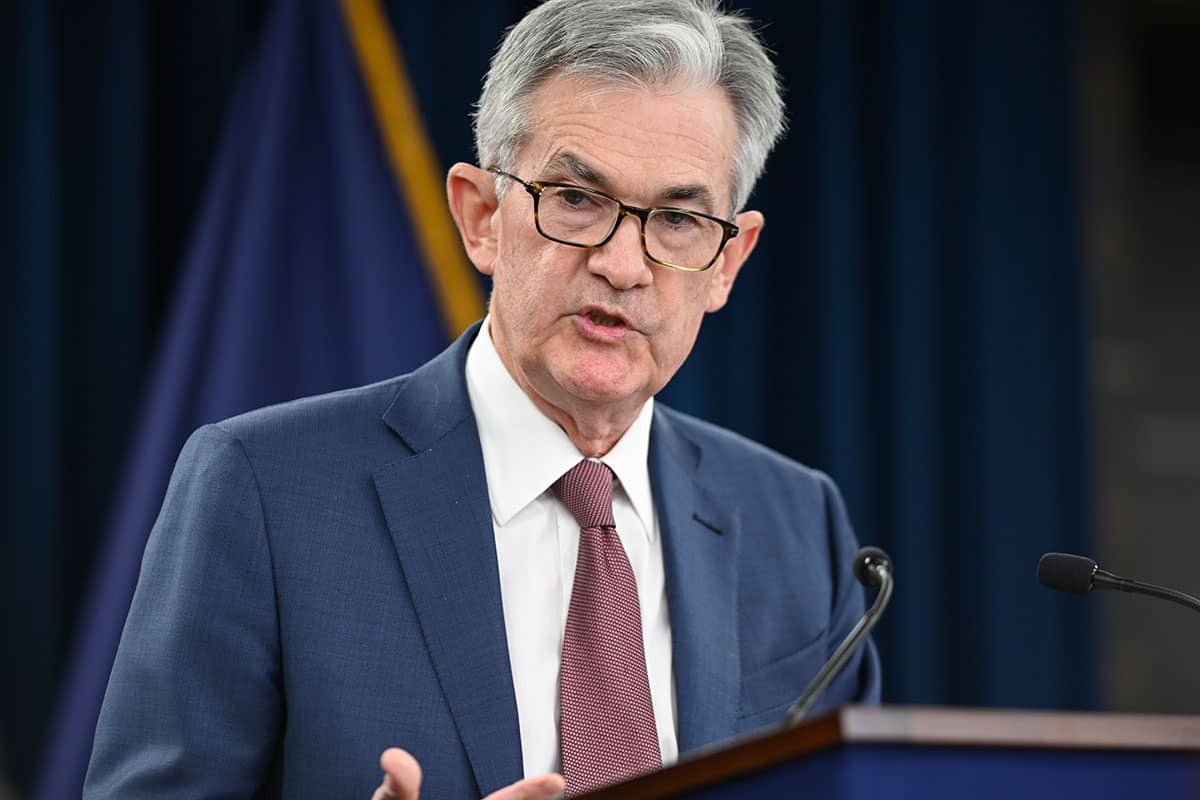Fed Minutes Leave Pound Sterling Subdued and Vulnerable against U.S. Dollar
- Written by: James Skinner
-
- GBP/USD vulnerable but less so than some others
- After Fed suggests it could yet surprise hawkishly
- Could lift Fed Funds rate to 1.5% at June meeting
- Fed's balance sheet rundown could begin in May
- $95BN p/m unwind much faster than 2017- 2019

Above: Federal Reserve Chairman Jerome Powell. Image © Federal Reserve.
The Pound to Dollar rate was left subdued near to 1.30 and at risk of further losses following the release of minutes from the March Federal Reserve (Fed) meeting, which suggested that financial markets are yet fully appreciate the pending shift in U.S. monetary policy.
Pound Sterling was left struggling for traction against the U.S. Dollar even as it remained buoyant against other major currencies heading into the Thursday session afterminutes of last month’s meeting indicated that the Fed could yet surprise on the hawkish side of market expectations.
“The “too much is priced” framework is the wrong framework here and people that have been using it have been getting torched over and over in trade after trade,” writes Brent Donnely, CEO of Spectra Markets and a veteran currency trader, in a Wednesday market commentary.
“Fading this Fed story is like fading Abenomics. Sure, it will work one day but it’s so much easier to just go with,” he also later said.
Above: Pound to Dollar rate at weekly intervals with Fibonacci retracements of 2020 recovery indicating possible medium-term areas of technical support for Sterling and shown alongside 200-week moving-average as well as spread - or gap - between 02-year UK and U.S. government bond yields. Click image for closer inspection.
The Fed already raised its interest rate for the first time since December 2018 last month, taking it up from 0.25% to 0.50%, but the meeting record revealed that “many” policymakers wanted to raise it to 0.75% and were only deterred from doing so by Russia’s February 24 invasion of Ukraine.
“Many participants noted that one or more 50 basis point increases in the target range could be appropriate at future meetings, particularly if inflation pressures remained elevated or intensified,” the meeting record states in one part.
“Participants generally agreed that monthly caps of about $60 billion for Treasury securities and about $35 billion for agency MBS would likely be appropriate,” minutes of the March meeting also said.
While inflation had already led markets to fully price-in a 50 basis point increase to a 1% Fed Funds rate for next month, Wednesday’s Federal Open Market Committee (FOMC) meeting minutes suggested the Fed may already be prepared to lift rates by the same amount all over again in June.
Above: USD/CHF at weekly intervals and alongside spread - or gap - between 02-year Swiss and U.S. government bond yields (orange). Shown with USD/JPY and Japan - U.S. yield differential for comparative purposes. Click image for closer inspection.
Pricing in overnight-indexed-swap markets implied on Wednesday that investors widely expected the Fed Funds rate to reach 1.375% in June, leaving it short of the 1.50% that would prevail in any scenario where the Fed raises interest rates by 0.50% at back-to-back meetings.
“The minutes also indicated that participants judged it appropriate to move towards a neutral policy position “expeditiously,” says David Mericle, chief U.S. economist at Goldman Sachs, referring to a level of interest rates that the Fed estimated to be around 2.4% as recently as March.
The minutes also confirmed that the Fed may begin shrinking its near-$9 trillion balance sheet as soon as next month and in amounts far larger than the average $34BN per month pace of balance sheet reduction implemented between January 2018 and September 2019.
“Participants also generally agreed that the caps could be phased in over a period of three months or modestly longer if market conditions warrant,” the meeting record also said.
Above: GBP/CHF shown at weekly intervals alongside spread - or gap - between 02-year UK and Swiss government bond yields. Click image for closer inspection.
“Participants generally agreed that” it would likely be appropriate to shrink the balance sheet at a pace of $95BN per month by ceasing to reinvest the monies received from maturing bonds each month and by also selling short-term treasury bills wherever necessary to meet that target.
This makes clear that recent strength in U.S. bond yields could persist for some time yet, which could be a problem for currencies and central banks that are lagging behind the Fed with their responses to inflation and resulting normalisation of monetary policy.
There are none who fit this description like the Swiss Franc and Swiss National Bank with its interest rate of -0.75%, which is the lowest in the world, although the Japanese Yen and Bank of Japan are close seconds.
“Rising long safe haven yields theoretically mean that if global yields continue to rise, the yen will have to absorb the pressure if JGB’s can’t,” says John Hardy, head of FX strategy at Saxo Bank.
“Rising yields are also a relative CHF-negative as the SNB will always pursue last-mover status, even if the country is still rock solid from a current account and stability angle,” Hardy and colleagues also said on Wednesday.











